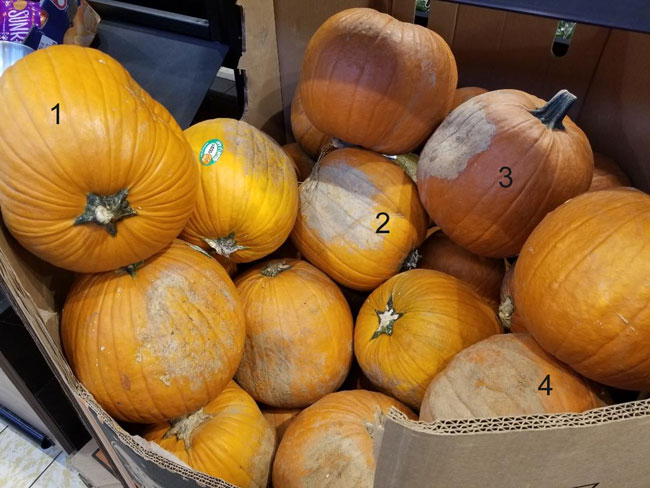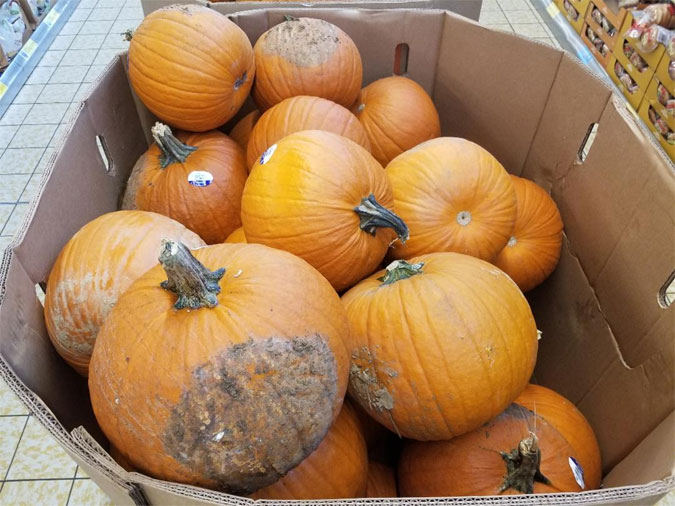When receiving Pumpkins you should remember they are bought based upon grade standards, with U.S. No. 1 Grade being the most common grade. Pumpkins are harvested directly from the field, into bins and shipped to their destinations. No grading lines or packing houses are used in the process. Due to wet, rainy weather conditions you may encounter pumpkins that were harvested while the ground was muddy, causing the surface of the pumpkin to also be dirty.

So what’s the guideline? The USDA leaves it up to the individual to decide what is scored as a defect. If you find the caked dirt or mud to materially affect the appearance, where you don’t think someone would buy the pumpkin, you should score the pumpkin as a defect. There is no requirement they be clean, so they may be clean, fairly clean or even slightly dirty. If you come across pumpkins with staining due to dirt, or even being covered with light sand or dirt, consider it meeting the requirement of U.S. No. 1, and is not scored as a defect.
Looking at the image above, if we were inspecting these pumpkins: Pumpkin Number 1 would be scored as a defect, as misshapen. Pumpkins Number 2, 3 and 4 would all be considered as being dirty, defects of the grade, all having caked on dirt or mud. You can see other pumpkins in the bin being slightly dirty, although not ideal, they would not be scored as defects.
So out of 16 or so visible pumpkins showing in the bin we would have scored 4 of these as defects, or 25%. You, of course would dig down in other bins, counting out the pumpkins and determining your defect percentage based upon your sample size. The U.S. No. 1 Tolerances allow no more than 10% Total defects, including not more than 2% Soft rot.

In this bin how many pumpkins do you see that would be defects, damage by caked dirt or mud? I would score 2 of these for sure, maybe 3 from what is shown.

No Comments on “Pumpkins- Dirty”